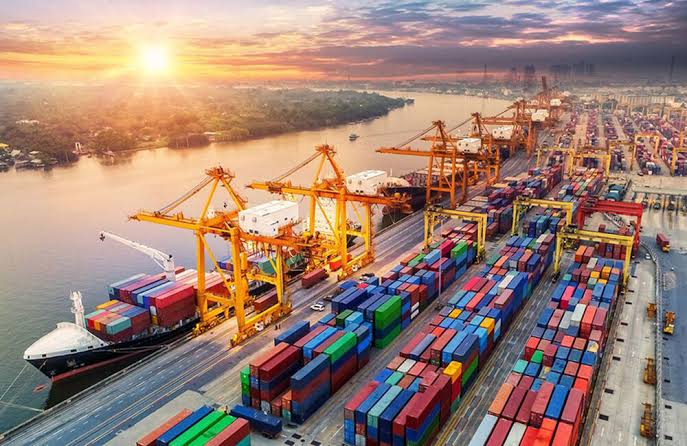
The National Industrial Development and Logistics Program (NIDLP) continues to be a cornerstone of Saudi Vision 2030, demonstrating exceptional performance in driving economic prosperity and diversification.
Launched in early 2019, NIDLP integrates four strategic sectors - energy, mining, industry, and logistics - while leveraging local content and Fourth Industrial Revolution principles to enhance value and broaden the economic base.
According to the NIDLP annual report for 2024, its activities contributed 39% to the kingdom's non-oil GDP, reaching SAR986 billion (($263 billion), an increase from SAR949 billion ($253 billion) in 2023. Non-oil activities now represent 55% of the total GDP, it stated.
Total non-oil exports reached SAR514 billion in 2024, marking a 13.2% growth compared to 2023.
The manufacturing sector grew by 4%, while mining, transportation, and storage sectors collectively saw a 5% growth during the year, reported SPA citing the NIDLP annual report.
Total non-oil exports reached SAR514 billion in 2024, marking a 13.2% growth compared to 2023. This includes SAR217 billion in non-oil commodity exports (4% growth), SAR91 billion in re-exports (42% growth), and SAR207 billion in service exports (14% annual growth).
Key export categories included chemical industries (SAR78.5 billion), metal and mineral products (SAR23.3 billion), food and beverages (SAR10.5 billion), and electrical appliances and equipment (SAR42.9 billion).
NIDLP sectors employed 2.433 million workers in 2024, adding over 508,000 new jobs, including more than 81,000 for Saudis (42,000 men, 39,000 women). Major employment contributions came from manufacturing, mining and quarrying, electricity and gas, and transportation and storage.
Non-governmental investments in NIDLP sectors amounted to SAR665 billion. Cumulative net loan approvals from the Saudi Industrial Development Fund reached SAR198 billion, while the Saudi Export-Import Bank provided SAR69.14 billion in cumulative credit facilities.
By the end of 2024, the number of industrial facilities reached 12,589, with 1,511 new factories completed. Cumulative non-governmental investments in industrial cities and special zones totaled SAR1,412.96 billion.
Cumulative military sales to local companies reached SAR34.32 billion, as the National Industrial Strategy continues to localize value chains in future industries like medical supplies, automotive, and energy-related products.
In renewable energy, projects with a total capacity of 20 gigawatts were launched, new solar energy agreements for 3.7 gigawatts were signed, and an additional 3.6 gigawatts became commercially operational.
A new global low for wind energy purchase price was recorded at SAR0.0587 per kilowatt-hour, contributing to an annual reduction of approximately 1.7 million tons of carbon emissions.
According to the NIDLP annual report for 2024, the mining sector demonstrated robust activity with total expenditure on mineral exploration reaching SAR228 per sq km.
The number of mining sites available for tender saw a remarkable 380% increase compared to the previous year.
The sector aims to contribute SAR176 billion to GDP by 2030 and create 219,000 jobs. Globally, the Kingdom now ranks as the second-best country in the mining licensing environment.
The logistics sector also experienced substantial development, with total logistics licenses reaching 1,056. The number of logistics centers for re-export expanded to 23, a significant leap from just two centers in 2019.
Port utilization increased to 64% from a baseline of 50.2%, and the number of containers handled reached 7.5 million. Customs clearance time was reduced to an impressive two hours.
NIDLP achieved several key performance indicators that surpassed its set targets: military industries localization reached 19.35% (target: 12.5%, baseline: 7.7%), local content in non-oil sectors amounted to SAR1,231 billion (target: SAR1,110 billion, baseline: SAR942 billion), final licenses for promising industries surged to 3,107 (target: 845, baseline: 169), cumulative exports from promising industries totaled SAR135.6 billion (target: SAR98.7 billion, baseline: SAR18.6 billion), and logistics centers for re-exports reached 23 centers (target: 16, baseline: 2). While port utilization reached 64%, it fell slightly short of the 66% target, though still significantly up from the 50.2% baseline, said the SPA report.
By the end of 2024, NIDLP managed a substantial portfolio of 284 initiatives, with 163 (57%) already completed. This highlights the intensive efforts to achieve Vision 2030's ambitious goals and the effective integration among executive agencies.
The 2024 indicators affirm NIDLP’s pivotal role in reshaping the national economy on robust developmental foundations, stated the report.
With accelerated progress and targets being met ahead of schedule, Saudi Arabia is confidently solidifying its position as a global industrial, economic, and logistics powerhouse, driven by an inspiring leadership and an ambitious strategic vision, it added.
